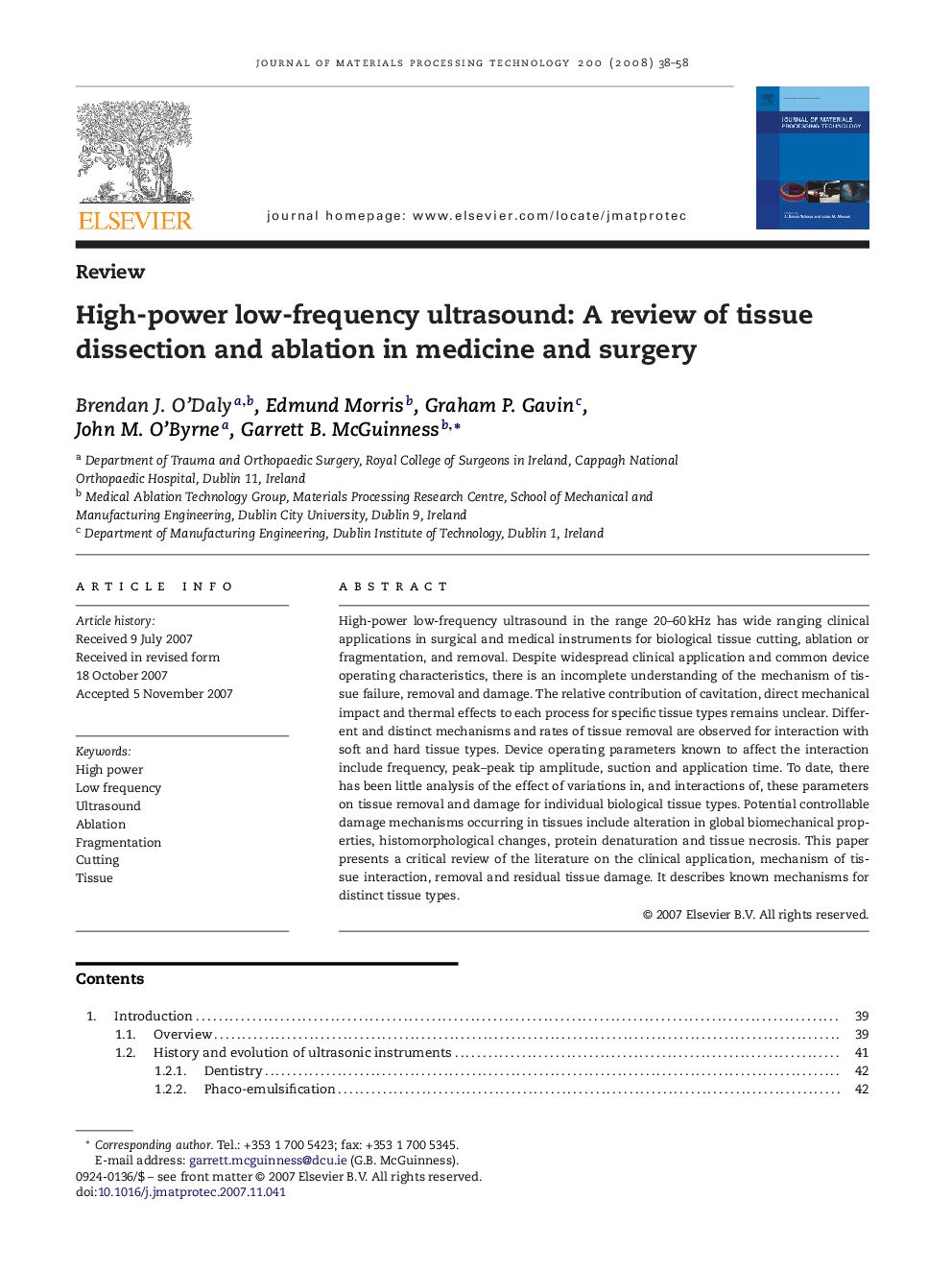| Article ID | Journal | Published Year | Pages | File Type |
|---|---|---|---|---|
| 798699 | Journal of Materials Processing Technology | 2008 | 21 Pages |
High-power low-frequency ultrasound in the range 20–60 kHz has wide ranging clinical applications in surgical and medical instruments for biological tissue cutting, ablation or fragmentation, and removal. Despite widespread clinical application and common device operating characteristics, there is an incomplete understanding of the mechanism of tissue failure, removal and damage. The relative contribution of cavitation, direct mechanical impact and thermal effects to each process for specific tissue types remains unclear. Different and distinct mechanisms and rates of tissue removal are observed for interaction with soft and hard tissue types. Device operating parameters known to affect the interaction include frequency, peak–peak tip amplitude, suction and application time. To date, there has been little analysis of the effect of variations in, and interactions of, these parameters on tissue removal and damage for individual biological tissue types. Potential controllable damage mechanisms occurring in tissues include alteration in global biomechanical properties, histomorphological changes, protein denaturation and tissue necrosis. This paper presents a critical review of the literature on the clinical application, mechanism of tissue interaction, removal and residual tissue damage. It describes known mechanisms for distinct tissue types.
